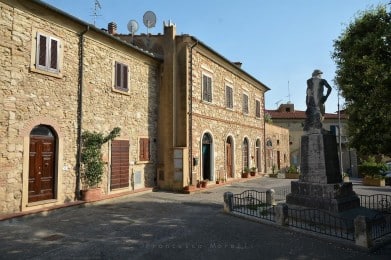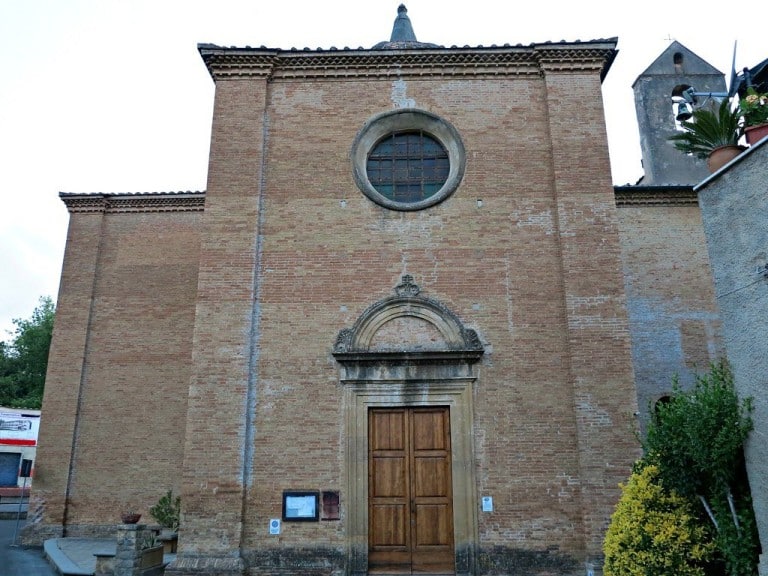In the heart of the village of Bibbona, at the foot of the medieval castle, stands the striking Church of Santa Maria della Pietà, a small architectural jewel dating from 1482, designed by Vittorio Ghiberti and Ranieri da Tripalle. The church, conceived in the shape of a Greek cross, embodies the canons of the Renaissance, where form and symbolism merge in a harmonious construction, charged with spiritual and, according to some scholars, even esoteric references.
Architecture and symbols
The structure is built around a central dome that towers at the intersection of the four arms and stands on an octagonal drum decorated with eight small oculi. The dome is divided into six ribs, while the arms of the cross are covered by elegant ribbed vaults. The overall effect is that of a solemn, collected and luminous environment, where architectural symmetry becomes an instrument of spiritual elevation.
The architectural centerpiece of the building is enriched by decorative elements such as shell valves inscribed in serti (plant garlands), placed at the base of the pendentives, typical Renaissance ornamental motifs.
Externally, the church is distinguished by the total absence of plaster, leaving the original stone exposed, and by the presence of a small bell gable placed on the north arm. The facade houses two rectangular slabs with the coat of arms of the Municipality of Bibbona, representing a rampant lion within a horse-head shield, adorned with a sinuous ribbon.
The mysterious inscriptions
One of the most fascinating aspects of the building are the Latin inscriptions engraved on the lintels of the church’s three portals. The main one bears the famous biblical phrase:
“Terribilis est locus iste” (“Terrible is this place”), a reminder of the mystery and sacredness surrounding the site.
The other two inscriptions read, “Hanc est domus Dei porta Coeli” (“This is the house of God and the gate of Heaven”); “Domus est pietatis et gratiae” (“This is the house of piety and grace”);
These verses, loaded with spiritual meanings, reinforce the impression of being in a place that is not only sacred but also symbolically powerful, so much so that it inspired legends linked to alleged Templar presences or figures such as Leonardo da Vinci.
The interior and the preserved masterpieces
Standing out inside the church is the image of the Pieta, a 14th-century tempera panel from the Florentine school, considered miraculous by popular tradition and the focus of centuries-old devotion. According to legend, the work was painted on a tufa rock, which is why it was decided to build the church on this very spot.
The high altar also houses an elegant 17th-century marble ciborium set in a tabernacle painted with effigies of Saints Bernard, Paul, Thomas and Stephen.
Also noteworthy is a canvas depicting the Trinity, attributed to Baroque painter Cesare Dandini, a seventeenth-century Florentine author, whose work adds to the church’s solemn and mystical atmosphere.
A place of faith and suggestion
The Church of Santa Maria della Pietà is not only a sacred building, but a concentration of art, history and mystery. Its perfectly proportioned architecture, enigmatic inscriptions, precious furnishings and the legend of the miraculous Madonna make it one of the most fascinating destinations for those visiting Bibbona.
A place of silence and contemplation, but also of questions and hidden symbols, where every element seems to allude to an ulterior meaning, capable of engaging believers, art lovers and lovers of mystery.



